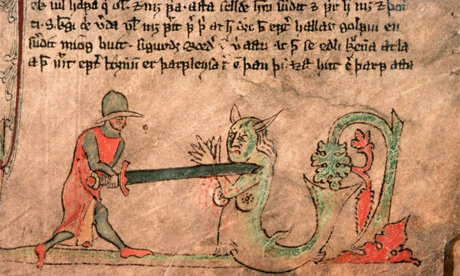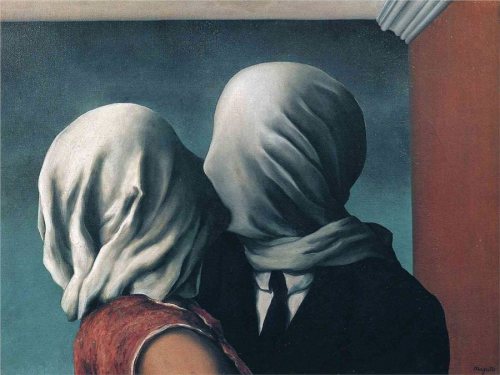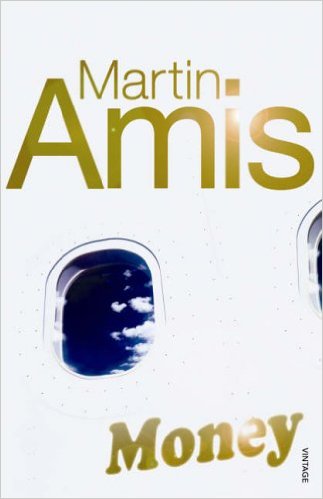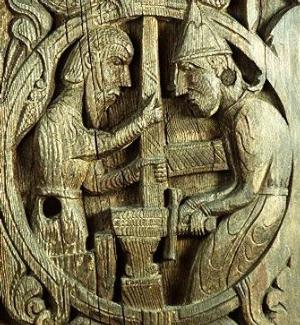
The genre of Beowulf is a topic that continues to be hotly debated, as Breizmann has already noted[1], and as any scholar working in the field will have already observed. Indeed, Beowulf scholarship concerning matters of genre goes way back to the “Age of Enlightenment” of Beowulf criticism when J.R.R. Tolkien opened the floodgates through his revolutionary essay, The Monsters and the Critics[2]. Breizmann thoroughly documents the developments after Tolkien, citing, on top of the innovative critic and author: Irving, Earl, Greenfield, and Klein; and recording their classifications of Beowulf as a “fairy tale, elegy, heroic lay, oral-formulaic poetry, historical and legendary narrative, and Christian allegory.”[3] She adds to this her own proposal of Beowulf as romance. Moreover, there are scholars such as Greenfield who have contemplated on Beowulf’s essence as a tragedy[4]. Such a variety leads one to ask whether there may be an all-encompassing label for Beowulf, one that includes every category in Breizmann’s critical compilation. In this paper, I wish to offer my own categorisation of Beowulf as an Anglo-Saxon fornaldarsaga by exploring the definition(s) of fornaldarsögur then positioning Beowulf in such a context.
What then, we may ask, are fornaldarsögur? The term fornaldarsögur (“sagas of ancient times”) is a modern term derived from Carl Christian Rafn’s original coinage, “foraldar sögur Norðurlanda,”[5] which means “sagas of ancient times in the North.” Stephen Mitchell attempts to give a very broad definition of fornaldarsögur, writing that they are “Old Icelandic prose narratives based on traditional heroic themes, whose numerous fabulous episodes and motifs create an atmosphere of unreality.”[6] Whilst such a definition agrees with the traditional opinion that “the fornaldarsögur are heroic,”[7] it falls short when tested against contemporary standards of specificity in that its description can be applied to any of five more subdivisions of the saga genre, which include: kings’ sagas, sagas of Icelanders, bishops’ sagas, Sturlunga sagas, and riddarasögur (“knightly romances”)[8]. What can be potentially ambiguous, and thus a matter of contention, in Mitchell’s definition is its lack of a hair-splitting distinction between fornaldarsögur and riddarasögur. Torfi Tulinius, however, allows for a distinct separation between the two categories, writing that
the fornaldarsögur all take place in the North and deal with Nordic heroes but the riddarasögur take place in the south of Europe or even more remote places, and the heroes are “valiant knights” who were infrequent visitors here in the North. Furthermore, some literary characteristics distinguish between these groups of sagas[9].
Jakobsson clarifies what exactly these distinguishing literary characteristics are: “The tragic end of traditional fornaldarsögur – e.g. Hálfs saga, Hrólfs saga kraka, and Völsunga saga – also distinguishes them from adventure sagas and romance in general.”[10] Hermann Pálsson further divides the fornaldarsögur into two categories: “heroic legend” and “adventure tales.”[11] Tulinius explains that “the former are based on the same ancient heroic tradition in the tragic mode as the lays of the Edda and have links with similar traditions in other Germanic languages”; the “‘adventure tales’ usually end well about heroes undertaking a quest or series of quests.”[12] And while there is, as yet, and despite all the aforementioned criticisms, no clear-cut authoritative definition for fornaldarsögur, Clunies-Ross provides two essential characteristics that many works which are considered fornaldarsögur share. She posits that firstly, “a number of fornaldarsögur represent a world of Scandinavian royal and heroic dynasties”[13] and that, secondly, the characters in the stories “frequently interact with beings that are not fully human.”[14]
In Beowulf, the first point in Clunies-Ross’ characterization of fornaldarsögur – its depiction of Scandinavian royal and heroic dynasties – becomes a major axis upon which the work’s action revolves. The poem’s narrator begins with “Hwæt wé Gár-Dena,”[15] invoking, through the use of the first-person plural pronoun “wé,” the Danish identity of both the speaker and his audience. Magennis notes, moreover, of the emphatic placement of “Gár-Dena” in Beowulf’s opening line. In light of this, Howe explains that “the setting of Beowulf may be understood as the homeland before conversion,”[16] and thus the “stories about the Danes and the Geats could serve as a powerful reminder of the Anglo-Saxon’s origins, both geographically and religiously.”[17] And if we are to divide the poem into two halves based on setting, the first being in Denmark, and the second in Geatland, we may observe in the first half an almost panoramic attention to the house of the Scyldings, the descendants of “héah Healfdene” (“the great Halfdane”)[18]. Indeed, while the first half marks the actions of the poem’s titular hero, it also prefigures and laments the downfall of the Scylding household: “nalles fácen-stafas / Þéod-Scyldingas þenden fremedon” (“The Scylding nation / was not yet familiar with feud and betrayal,” ll. 1018-1019). Such events as are referred to in Beowulf thus accentuate its essence as a fornaldarsaga, in that it “display[s] a lengthy continuity within the Nordic cultural context.”[19] Consequently, the poem aligns itself not only with Icelandic kings’ sagas such as Heimskringla[20] and Skjöldunga saga, but, more importantly, with other fornaldarsögur as well, such as Hrólfs saga kraka and Völsunga saga.
It is not surprising then, that, as North argues, “…the poet appears to draw on the unquantifiable sources of a living Danish mythology. Respectively he plays on Freyja’s Brísinga men, Óðinn’s vengeance for Baldr, and Þórr’s death by the World Serpent.”[21] Along with the quasi-mythological atmosphere of Beowulf and fornaldarsögur come the monsters and otherwordly beings. The world that their presence invokes is a world “when Scandinavia was still pagan,” and thus “the action of [fornaldarsögur] was removed from the world of the everyday, at least in part, but not so fully removed that its subject-matter could not be meaningful to [the audience].”[22] In this sense, it is difficult to fully agree with Tolkien when he writes that “it is just because the main foes in Beowulf are inhuman that the story is larger and more significant…It glimpses the cosmic and moves with the thought of all men concerning the fate of human life and efforts; it stands amid but above the petty wars of princes, and surpasses the dates and limits of historical periods, however important.”[23] In ignoring the antiquarian historicity—the reality of the pagan world—alluded to in the poem, we take away not only the full force of the Þórr myth as it is ascribed to Beowulf and his fight against the dragon[24], but also the pathos that the audience, the “Gár-Dena in géar-dagum,” are meant to feel towards their pagan ancestors. Black, et al. put the situation in a better perspective: “Whatever its underlying structural patterns, Beowulf is neither myth nor folktale; its stories of dragon-slaying and nocturnal struggles are set against a complex background of legendary history.”[25] This is what makes Beowulf a unique work of literature in the Old English tradition. Not only does it seem somewhat out of place with its “foreign-ness” (in terms of its Nordic connection) when compared with other Old English heroic poems like Judith (which stems from Biblical tradition) and The Battle of Maldon (which is set in Anglo-Saxon England), but the presence of the monsters, especially the dragon, invokes the mythic climate of the Eddas and other fornaldarsögur. Thus, it is easy to see how Richard North comes to observe there to be a growing consensus that the poet of Beowulf adapts tales connected with those of Norse mythology: Freyja’s Brísingamen; Höðr’s slaying of Baldr and Óðinn’s vengeance; and Þórr’s battle against the World Serpent,’’[26] since Beowulf belongs to what Tulinius calls “the Matter of the North” and its vast range of saga literature, as much as it belongs to the English—specifically Anglo-Saxon—tradition of poetry.
Categorising Beowulf as an Anglo-Saxon fornaldarsaga helps give us a wider perspective of the work’s historicity. It is among the many sagas that deal with Scandinavian heroic royalty, and one amongst many more that incorporate the mythic and legendary “past” of its contemporary audience, reworking themes and motifs that help(ed) shape their society and burgeoning nations. Such a grouping thus removes Beowulf from isolation and assimilates it into the wealth of Icelandic fornaldarsögur that give it context, removing our need to force it into labels which may undermine its historical and structural richness. Being a fornaldarsaga, it becomes at once a folktale, a tragedy, a romance, as well as a historical and legendary narrative.
Bibliography:
Beowulf, in The Broadview Anthology of British Literature, eds. Joseph Black et al. (Toronto: Broadview Press, 2016), 65-116.
Breizmann, Natalia. “”Beowulf” as Romance: Literary Interpretation as Quest.” MLN 113, no. 5 (1998): 1022-035.
Fjalldal, Magnus. “An Unnoticed “Beowulf” Analogue in “Heimskringla.”(Critical Essay).” Notes and Queries 60, no. 3 (2013): 341-43.
Greenfield, Stanley. “”Beowulf” and Epic Tragedy.” Comparative Literature 14 (1962): 91.
Heaney, Seamus. Beowulf. London: Faber and Faber, 1999.
Howe, Nicholas, “Beowulf and the Ancestral Homeland,” in The Postmodern Beowulf: A Critical Casebook, edited by Eileen A. Joy and Mary K. Ramsey, 49-89. Morgantown: West Virginia University Press, 2006.
Jakobsson, Armann. “The Royal Ideology and Genre of Hrolfs Saga Kraka.” Scandinavian Studies 71, no. 2 (1999): 139.
Magennis, Hugh. The Cambridge Introduction to Anglo-Saxon Literature. Cambridge Introductions to Literature. Cambridge ; New York: Cambridge University Press, 2011.
Mitchell, Stephen A. Heroic Sagas and Ballads. Myth and Poetics. Ithaca: Cornell University Press, 1991.
North, Richard. The Origins of Beowulf : From Vergil to Wiglaf. Oxford ; New York: Oxford University Press, 2006.
Ross, Margaret Clunies. The Cambridge Introduction to the Old Norse-Icelandic Saga. Cambridge Introductions to Literature. Cambridge: Cambridge University Press, 2010.
—. A History of Old Norse Poetry and Poetics. Cambridge, UK ; Rochester, NY: D.S. Brewer, 2005.
—. Old Icelandic Literature and Society. Cambridge Studies in Medieval Literature ; 42. Cambridge, U.K. New York: Cambridge University Press, 2000.
Stefán Einarsson. A History of Icelandic Literature. New York: Johns Hopkins Press for the American -Scandinavian Foundation, 1957.
Tolkien, J. R. R., and Tolkien, Christopher. The Monsters and the Critics, and Other Essays. London ; Boston: Allen & Unwin, 1983.
[1] Natalia Breizmann. “”Beowulf” as Romance: Literary Interpretation as Quest.” MLN 113, no. 5 (1998): 1022.
[2] J.R.R. Tolkien, The Monsters and the Critics, and Other Essays. (London ; Boston: Allen & Unwin, 1983).
[3] 1022.
[4] Stanley Greenfield, “”Beowulf” and Epic Tragedy.” Comparative Literature 14 (1962).
[5] Margaret Clunies-Ross, The Cambridge Introduction to the Old Norse-Icelandic Saga. Cambridge Introductions to Literature. (Cambridge: Cambridge University Press, 2010), 28.
[6] Stephen Mitchell, Heroic Sagas and Ballads. Myth and Poetics. (Ithaca: Cornell University Press, 1991), 27.
[7] Ármann Jakobsson, “The Royal Ideology and Genre of Hrolfs Saga Kraka.” Scandinavian Studies 71,no. 2 (1999): 142.
[8] Cf. Ibid.
[9] Cf. Jakobsson, 143.
[10] Ibid.
[11] Torfi Tulinius, “The Matter of the North: fiction and uncertain identities in thirteenth century Iceland” in Margaret Clunies-Ross, Old Icelandic Literature and Society, Cambridge Studies in Medieval Literature ; 42. Cambridge, U.K. (New York: Cambridge University Press, 2000), 243.
[12] Ibid.
[13] The Cambridge Introduction to the Old Norse-Icelandic Saga, 76.
[14] Ibid, 77.
[15] All lines from Beowulf here (in the original and in translation) are taken from Seamus Heaney’s version(1999).
[16] Nicholas Howe, “Beowulf and the Ancestral Homeland,” in The Postmodern Beowulf: A Critical Casebook, edited by Eileen A. Joy and Mary K. Ramse. (Morgantown: West Virginia University Press, 2006) 52.
[17] p. 53.
[18] line 57.
[19] Mitchell, 27.
[20] Cf. Magnus Fjalldal, “An Unnoticed “Beowulf” Analogue in “Heimskringla.”(Critical Essay).” Notes and Queries 60, no. 3 (2013): 341-43.
[21] Richard North, The Origins of Beowulf : From Vergil to Wiglaf. (Oxford ; New York: Oxford University Press, 2006), 194.
[22] Clunies-Ross, The Old Norse-Icelandic Saga, 58.
[23] J.R.R. Tolkien, The Monsters and the Critics, and Other Essays. (London ; Boston: Allen & Unwin, 1983), 33.
[24] Cf. North, 202.
[25] Beowulf, in The Broadview Anthology of British Literature, eds. Joseph Black et al. (Toronto: Broadview Press, 2016), 66.
[26] And here North cites substantially: “Dronke, ‘Beowulf and Ragnarök’, 311—18. D.G. Calder, ‘Setting and Ethos: The Pattern of Measure and Limit in Beowulf’, SP 69 (1972), 21 – 37, esp. 36. Frank, ‘Skaldic Verse and the Date of Beowulf’, 132 (Baldr and Óðinn). Beowulf: A Student Edition, ed. Jack, 101 (Brísingamen). Beowulf, ed. Mitchell and Robinson, 134 (Baldr and Óðinn). Orchard, Companion, 114-23 (all three motifs). Rauer, Beowulf and the Dragon, 136-7 (Þórr and the World Serpent). Niles (Beowulf, 193) is against, albeit he believes Beowulf was composed partly for Anglicized tenth-century Danes” (Cf. North, p. 205).









DUSK AND THE UNCANNY IN CONRAD’S HEART OF DARKNESS
The dichotomy of Light and Darkness is noticeably prevalent and all-encompassing in Joseph Conrad’s Heart of Darkness, so much so that the symbolisms and meanings of this antithetical pair may seem at times to fall into ambiguity or to get muddled into complicated significations. Yet the novel remains comfortable with such a situation. Its themes thrive on ambivalence and a tone of seeming uncertainty. What at first glance appears to be a scene of incertitude for characters can turn out to be, after an uncovering of many complex layers, a moment of revelation, self-awareness, or existential understanding. In Conrad’s Heart of Darkness, the gulf between Light and Darkness – the gulf that harbours the uncanny, the gulf that represents Dusk – is depicted as a zone wherein Marlow experiences self-realisation and enlightenment.
There is in Heart of Darkness a gap in the dichotomy of Light and Darkness. This gap is magnified and made observable by the distinct contrast in the representative figures of Light and Darkness, and indeed they are portrayed to be almost archetypal. Kurtz is said to be “claimed” by “powers of darkness” (1989). The darkness embodied in Kurtz is universalised as Marlow describes the last moments of his life: “The brown current ran swiftly out of the heart of darkness, bearing us down towards the sea…and Kurtz’s life was running swiftly too, ebbing, ebbing out of his heart into the sea of inexorable time” (2003). The juxtaposition of these sentences parallels Kurtz’s heart with the “heart of darkness” that is found everywhere from the centre of the wilderness to which the phrase alludes, to the River Thames which it threatens to encompass. Kurtz’s position as a figure that embodies darkness is further solidified when he is described in his deathbed as not being able to see the “light…within a foot of his eyes” (2004). Indeed, his stare “could not see the flame of the candle, but was wide enough to embrace the whole universe, piercing enough to penetrate all the hearts that beat in the darkness” (2005). The irony of this description is in Kurtz’s inability to see light no matter how wide or universal his stare is. All he is able to see is darkness, and that darkness resides within him.
Inasmuch as Kurtz is unable to see the light, the Intended is ignorant of – if not unable to comprehend – the darkness in Kurtz. She is portrayed as an archetype of light and of what is beautiful, pure, and innocent. Marlow describes her thus: “She struck me as beautiful—I mean she had a beautiful expression. I know that the sunlight can be made to lie too, yet one felt that no manipulation of light and pose could have conveyed the delicate shade of truthfulness upon those features” (2007). She has “a pale head”, “fair hair”, a “pale visage”, and a “pure brow” (2007). All these fair and beautiful external features set her up in contrast with the darkness within Kurtz. However, her innocence, her “unextinguishable light of belief and love” (2008), is thought by Marlow to be incapable of understanding or bearing the reality of Kurtz’s darkness. He says that, for her, it would be “too dark altogether” (2010). He thus implies that there is a necessary separation between the dealings of Light and Darkness.
Following Marlow’s logic for separation, it would seem that the Darkness and Light that Kurtz and his Intended signify respectively have between them an unbridgeable gulf. And yet the novel complicates this distinction. Dusk, a time that rests between the bright and dark hours of the day, is depicted in the beginning of the novel with poignancy: “And at last, in its curved and imperceptible fall, the sun sank low, and from glowing white changed to a dull red without rays and without heat, as if about to go out suddenly, stricken to death by the touch of that gloom brooding over a crowd of men” (1955). It is in the light of this setting sun where the Nellie’s crew go through a contemplative and aesthetic experience: “We looked at the venerable stream not in the vivid flush of a short day that comes and departs for ever, but in the august light of abiding memories” (1955). It is also in the climate of this setting wherein Marlow’s narrative is unfolded: not in the brilliance of midday nor in the darkness of midnight, but in the dying light of dusk.
Dusk is the gulf between Light and Darkness, and this gulf may be equated to the realm of the uncanny, the realm of Freud’s Unheimlich. Indeed, insofar as Freud’s concept of the Unheimlich breaks down the binary boundaries between its own essence and that of the Heimlich, so does the concept and imagery of dusk break down the dichotomy of Light and Darkness. This area of the uncanny in the novel breaks down oppositions in such a way that there is certainty to be found in uncertainty and realisation in ambiguity. The gulf of the uncanny, the gap symbolised by dusk, is a dialectical realm wherein the ethos of Marlow’s character attains an understanding of its existence and that of the world and people around him. The culmination of Marlow’s experience, being a character situated symbolically in such a realm, is described by himself as such: “It seemed somehow to throw a kind of light on everything about me—and into my thoughts. It was sombre enough too—and pitiful—not extraordinary in any way—not very clear either. No, not very clear. And yet it seemed to throw a kind of light” (1958). In his experiences are fragments of self-realisation, revelations, and understandings, not least of which is his understanding of Kurtz’s darkness and his Intended’s sparkle of sublimity. Marlow also explains to his fellow seamen that “it seems to me I am trying to tell you a dream…No, it is impossible; it is impossible to convey the life-sensation of any given epoch of one’s existence” (1973). His contemplations and philosophies, unclear to himself at first, are constantly deconstructed and reconstructed in the course of his journey and his narrative.
Marlow is subsequently elevated into a state of enlightenment. He becomes representative of the individual who beholds the Truth and escapes the Platonic Cave, but who also consequently becomes alienated from his company. By the end of the novel he is said to have “ceased, and sat apart, indistinct and silent, in the pose of a meditating Buddha” (2010). And indeed he has already recognised his isolation in the artistic frame when he states, “We live, as we dream—alone” (1973). Yet this alienation, this dream-like uncanny state of retrospection, allows Marlow to observe and understand the universal darkness while remaining apart from it. He thereby becomes the didactic Individual, a signifier of the Particular marked especially by his contrast with the nameless Others, his fellow seafarers, to whom he shares his profound reflections on Truth and the human soul. In this perspective he is not alone. His life, as in his dream-like narration, is recounted with company. Together, they journey through the river of experience and past memories, with the threat of the looming darkness making their quiet solidarity all the more poignant.
Bibliography:
Conrad, Joseph. Heart of Darkness. The Longman Anthology of British Literature, ed.by K. J.H. Dettmar, Pearson Education, 2010. pp.1949-2010.
Leave a comment
Filed under Fantasy
Tagged as aesthetics, books, commentary, conrad, darkness, dreams, dusk, essay, freud, heart of darkness, human soul, humanity, imagery, light, literature, marlow, philosophy, reads, ships